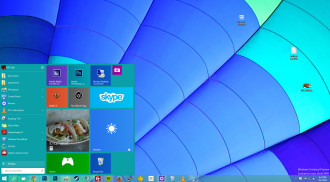 Microsoft appears to have further muddied the waters with its announcements about Windows 10 last week.
Microsoft appears to have further muddied the waters with its announcements about Windows 10 last week.Windows 10: the mess begins
 Microsoft appears to have further muddied the waters with its announcements about Windows 10 last week.
Microsoft appears to have further muddied the waters with its announcements about Windows 10 last week. Microsoft appears to have further muddied the waters with its announcements about Windows 10 last week.
Microsoft appears to have further muddied the waters with its announcements about Windows 10 last week. Taiwanese suppliers of notebooks are not over impressed by the news last week that Microsoft will give free upgrades to its Windows 10 operating system.
Taiwanese suppliers of notebooks are not over impressed by the news last week that Microsoft will give free upgrades to its Windows 10 operating system.
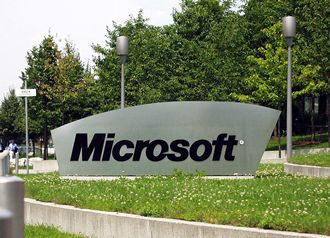 A company based in Seattle that is launching an operating system next year is not getting a positive vote from hardware companies desperate to sell more kit.
A company based in Seattle that is launching an operating system next year is not getting a positive vote from hardware companies desperate to sell more kit.
Microsoft is introducing an operating system next year called Windows 10 that is already delayed and will be free of charge to anyone who has made the mistake of instaling or buying Windows 8.1.
Microsoft is jumping from Windows 8 to Windows 10, ignoring the number nine, purely for marketing reasons.
But according to Taiwanese wire Digitimes, PC vendors in the country are shaking their heads because they don’t feel that people will spend money on new kit.
It quotes vendors as saying that Microsoft’s partnerships with Oracle and VM Ware will also adversely affect PC hardware vendors.
To read between the lines, it seems that the hardware vendors are telling the rather ancient Microsoft that it’s history.
 Data from StatCounter Global Stats showed that Windows XP s still the world’s second most popular operating system.
Data from StatCounter Global Stats showed that Windows XP s still the world’s second most popular operating system.
That’s despite the fact that earlier this year Microsoft pulled the plug on XP, apart from on embedded devices.
StatCounter said that Windows 8.1 now has more volume than Windows 8.0 – representing 7.5 percent of OS share.
Windows 7.0 refuses to go away – it has a market share of 50.3 percent in the USA, with XP on 12.9 percent. Windows 7 is expected to be EOLed next year, forcing the world+dog over to 8.1 in preparation for the introduction of Windows 9.
The figures are based on 15 billion page views per month to over three million websites – it’s possible to distinguish between 8 and 8.1 because the latter has a distinct user agent.
StatCounter data is here.
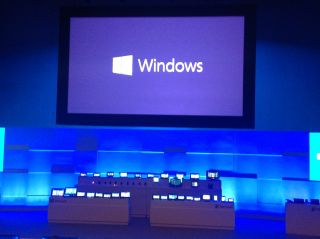 Toshiba introduced a campaign aimed at supporting channel players specialising in the SMB sector.
Toshiba introduced a campaign aimed at supporting channel players specialising in the SMB sector.
Called “”Get Modern with Toshiba”, the scheme ties in with Microsoft’s Get2Modern – an attempt by the software giant to wrest us away from Windows XP and Office 2003.
Toshiba said its channel partners will be given competitive prices on machines including the Portege Z30, Tecra Z40 and Tecra Z50. A trade in scheme lets SMBs claim up to £100 on new products, while Toshiba said its reliability guarantee lets its partners offer free repair and full refunds if on old model is traded in before March 31st 2014.
Toshiba said many SMBs are still using Windows XP and as we all know Microsoft will can support for Office 2003 and Windows XP on April 8th next.
Toshiba’s marketing director, Matt McDwall, claims “there’s a strong financial argument” to move from XP to Windows 8.1 – basing that claim on IDC figures that show running Windows XP is five times more expensive than Windows 7.
 Most people were reasonably happy with Windows 7. For that matter, most people quite liked Windows XP. No one liked Vista. And it’s pretty clear that Windows 8 has gone down with the most enormous thud.
Most people were reasonably happy with Windows 7. For that matter, most people quite liked Windows XP. No one liked Vista. And it’s pretty clear that Windows 8 has gone down with the most enormous thud.
Even Microsoft seems to acknowledge that – our sister publication TechEye is reporting that it is saying Windows 7 isn’t that secure.
Actually, it’s Microsoft that isn’t that secure. And its insecurity is linked to Intel’s insecurity too. Microsoft, like Intel, was way too late to jump on the tablet bandwagon and its efforts to get into the smartphone market have been somewhat of a big fail too.
The truth is that it’s all about money and has very little to do with security. These endless patches from Microsoft for operating systems have always been a nuisance and demonstrate that on the OS front, at least, the software giant hasn’t really invented anything. It’s all been borrowed or acquired.
You can’t get a new PC from a retailer now without it being installed with Windows 8.1. Want Windows 7? You’ll have to buy it separately. And if you believe Microsoft, it’s not that secure anyway.
At the launch of Windows XP in London all those years back, Steve Ballmer told us that it was the most secure version of Windows ever. Some of us remember what happened with that one.
I have a machine here that’s running Windows XP and there’s no way I’m “upgrading” it to Windows 8.1. That will leave me insecure, according to Microsoft. Insecure I will be, then. But I do get the definite feeling that I’m not alone in sticking with an OS I like and without the tablet feel I expect on a tablet, not on a PC.
Windows 8.1 is unlikely to save Microsoft’s bacon and slowness in delivering an adequate OS has damaged its reputation, a report suggests.
According to Taiwanese wire Digitimes, unnamed sources in the supply chain are suggesting that there will be little or no improvement in the PC market not only this year, but into next year too.
It isn’t all Microsoft’s fault, however. Sales of PCs are in decline because people are using tablets and smartphones more.
Even though the unnamed sources think that things are looking gloomy, nevertheless a number of vendors including HP, Lenovo, Acer and Asustek are introducing devices tailored to Windows 8.1, says Digitimes, here.
 Windows 8.1 goes on general release today as a free upgrade for people with Windows 8, and it will also be on new Wintel machines worldwide too.
Windows 8.1 goes on general release today as a free upgrade for people with Windows 8, and it will also be on new Wintel machines worldwide too.
As we reported from Computex earlier this year, Microsoft was essentially forced to re-institute the start button and to make other improvements following a more than lukewarm welcome from the channel and from end users at launch.
Microsoft has a partner blog, here, and according to The Final Step, to CCS Media and to Centrix software. James Hardy, at CCS Media says: “I genuinely believe that Windows 8 offers more in a touch device that can be found anywhere else on the market. Windows 8.1…. provides IT departments with the ability to customise devices to suit the needs of their business.”
We’d be interested to hear from other partners what they believe to be true about Windows 8.1 – we suspect that not all of them are going to be quite so gung ho about the upgrade as the three companies listed above.
 Microsoft said the Scottish government is to adopt Windows 8 tablet PCs.
Microsoft said the Scottish government is to adopt Windows 8 tablet PCs.
The government will take delivery of Samsung Series 7 Slates, Dell Latitude 10s and Samsung ATIVs running Win8.
Trustmarque, an MS Gold Partner, created a proof of concept. Mark Garrity, head of the UK public sector at Trustmarque, said that the success of the move underlines a strong partnership between his company and Scotland.
The deployment will include MS User Experience Virtualisaion which lets users log in to any computer on the same network.
Staff in the pilot project included 20 top government execs and 20 techniques.
No details were given of the value of the deal.
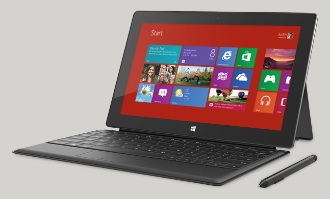 Although many in the industry have already written off Windows RT, Microsoft is giving it a shot in the arm with a second generation Surface tablet. Dubbed Surface 2, without the RT suffix, the new tablet is based on Nvidia’s Tegra 4 SoC and it boasts an 1080p display. The specs are hardly surprising, as the tablet was an open secret for months.
Although many in the industry have already written off Windows RT, Microsoft is giving it a shot in the arm with a second generation Surface tablet. Dubbed Surface 2, without the RT suffix, the new tablet is based on Nvidia’s Tegra 4 SoC and it boasts an 1080p display. The specs are hardly surprising, as the tablet was an open secret for months.
The biggest difference, however, is not under the bonnet. The Surface 2 will go on sale at Microsoft retail store and select third-party retailers in 22 markets. The first generation Surface RT was hampered by slow introduction and it took months to roll out in some markets. Microsoft clearly cannot afford to lose momentum on the Surface 2, which could be its last chance in the ARM-based tablet market, and the last chance for Windows RT 8.1. The Surface 2 is available in 32GB and 64GB flavours, starting at £359.
The Surface Pro 2 is a different beast, as it’s based on a beefier x86 chip and it runs Windows 8.1 Pro. It leverages Intel’s new Haswell low-power Core i5 processor and it is said to increase performance and deliver up to 60 percent more battery life than the original Surface Pro. Starting at £719, it’s not very cheap, but the Surface Pro 2 will be offered in 64GB and 128GB configurations with 4 GB of RAM and 256GB and 512GB configurations with 8 GB of RAM. That’s quite a lot for a tablet.
Microsoft also launched six new accessories, including new Touch and Type covers. In addition, there’s a Power Cover as well, which includes a battery and can extend battery life by up to 50 percent, but it costs a rather painful £165. There’s a new car charger with USB, along with the Arc Touch Mouse Surface Edition – although Windows 8.1 is designed with touch in mind, many legacy apps work a lot better with a proper mouse.
Both tablets are significant upgrades and go a long way towards addressing several shortcomings which plagued the first generation Surface tablets. The Surface Pro 2 in particular is a very impressive piece of kit, but it’s quite pricey. The Surface 2 on the other hand got a nice CPU bump along with a high-definition screen and on paper it looks a lot better than its predecessor. Sadly, Windows RT adoption remains relatively low and one tablet not enough to turn things around.
 For months we’ve been hearing talk of new and exciting Windows 8.x devices, with touchscreens and exciting new form factors. Now that they are slowly starting to appear, it seems that the optimism was unfounded, and that’s putting it mildly.
For months we’ve been hearing talk of new and exciting Windows 8.x devices, with touchscreens and exciting new form factors. Now that they are slowly starting to appear, it seems that the optimism was unfounded, and that’s putting it mildly.
Although some industry leaders like Acer’s Jim Wong said touch enabled notebooks would make up about 30 to 35 percent of all shipments, IDC believes the actual figure will much lower.
“We forecast that 17 percent to 18 percent of all notebooks would have touch this year,” IDC analyst Bob O’Donnell said in a recent interview. “But that now looks to be too high, to be honest.”
O’Donnell said IDC would probably slash its estimates to between 10 percent and 15 percent of touch-enabled notebooks. NPD DisplaySearch puts the number at just 12 percent, reports Computer World.
This is very bad news for Microsoft and Intel. Users simply don’t appear to be interested in touchbooks and to be honest they shouldn’t be. Simply slapping a touchscreen on a computer with Microsoft’s user interface doesn’t transform it into an appealing tablet. Microsoft gambled on touch support in its radical UI interface in Windows 8 and the gamble didn’t pay off. Traditionalists used to the old Windows 7 layout and the Start button hated it. At the same time it didn’t manage to attract the tablet crowd.
Cost is another problem. Touch-enabled notebooks are still relatively expensive and O’Donnell believes the prices aren’t falling fast enough, as they are still in the $699 to $799 range. In other words customers are being asked to say yes to a massive premium for something they essentially don’t need and don’t really want.
O’Donnell believes it’s time for Microsoft to recognize that touchscreens don’t have the Midas touch they won’t help sell notebooks. He stressed that Microsoft has to make sure that Windows 8.x works well in a non-touch environment, as ninety percent of PCs sold this year simply won’t have touch support.
 Combined worldwide shipments of tablets and PCs are expected to hit 493.1 million units, according to research from Canalys. The firm is expecting seven percent growth, but it will come from tablets rather than PCs.
Combined worldwide shipments of tablets and PCs are expected to hit 493.1 million units, according to research from Canalys. The firm is expecting seven percent growth, but it will come from tablets rather than PCs.
Tablets are forecast to account for 37 percent of the market, up from 25 percent last year.
By 2017, unit shipments should reach 713.8 million, but only a quarter of them will be laptops, while tablets should make up 64 percent of all shipments.
The tablet market is booming. It more than doubled in the first quarter of the year, while at the same time desktop and laptop shipments took a double-digit plunge. Tablet shipments in 2013 should hit 182.5 million units and by the end of the year they should outpace laptops.
Competition should heat up over the next few quarters, with traditional PC vendors vying for a piece of the lucrative tablet market. Windows 8.1 tablets are expected to start making their mark later this year, but they might not have what it takes to stand up to Android and iOS gear in the low end. Therefore many outfits are turning to Android tablets, including Acer, Asus, Lenovo and HP. However, the trouble with cheap Android tablets is that they’re not good money makers.
“Shipment numbers can be high but absolute margins on these products are expected to be small. Low-price tablets will not be lucrative but it is necessary to compete or a vendor will simply lose relevance and scale. In fact, accessories, particularly cases, as well as the new generation of high-tech app-enabled accessories will likely provide higher margins than the products themselves,” said Pin-Chen Tang, research analyst at Canalys. “This new influx of Android devices will provide a boost to the platform and Canalys therefore expects Android to take a 45% share in 2013, behind Apple at 49%. The iPad mini is expected to continue selling well, becoming more significant in terms of the product mix and spawning a further increase in consumer demand for smaller tablets.’
The other big unknown is Intel’s 2-in-1 convertible push. They should also start appearing later this year and vendors have already shown off some designs, but many are not convinced that they will do well. The first generation isn’t very impressive. They require pricey and relatively hot x86 chips, so they end up a bit bulkier than ARM-based tablets. In addition, Windows 8.x is still an unproven OS in the tablet space and it’s more bloated than Android or iOS.
“These convertible products have disappointed so far. Convertibles are too heavy in tablet form and too expensive when compared with clamshell product,” said the company. Canalys therefore expects that, for at least the next 18 months, consumers will buy separate products, rather than compromise on a Windows 8 convertible or hybrid PC. Even for Android products, alternative form factors are not expected to grow rapidly due to the category being sandwiched between low-priced slates and more familiar Windows-based clamshell notebooks,” said Canalys analyst James Wang.
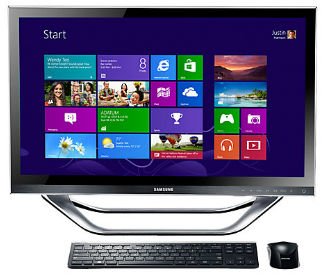 After failing to save the PC market from its inevitable nosedive, Windows 8 is struggling to gain market share. It is still growing, but at a snail’s pace and the dominant Redmond flavoured operating system remains Windows 7.
After failing to save the PC market from its inevitable nosedive, Windows 8 is struggling to gain market share. It is still growing, but at a snail’s pace and the dominant Redmond flavoured operating system remains Windows 7.
New data from Net Applications has revealed that July was a pretty bad month for Windows 8, as it saw a miserable 0.3 percent gain.
Windows 8 ended the month with a share of 5.4 percent, while Windows 7 went up from 44.37 to 44.49 percent. This basically means that some people are still buying Windows 7 gear, or upgrading existing systems to Win 7. It is not good news, since Windows 8 was released last October.
In fact, Windows 8 overtook Vista just a few months ago and Vista still has a 4.24 percent share, although it is declining. Windows XP on the other hand just refuses to die. Its share actually went up from 37.17 percent to 37.19 percent last month. Clearly Redmond seeded XP with a few cockroach genes, but since it will discontinue support for the venerable OS in April next year, the share should plummet over the next few months.
Although Apple is getting a lot of attention, Windows remains the dominant platform worldwide, with a 91.51 percent share, up from 91.51. OS X and Linux were down 0.01 and 0.03 percent respectively.
Windows 8.1 and the imminent demise of XP should fuel more growth for Windows 8.x, but the gains will be limited. Windows 8 will end its first year on the market with a single-digit market share. Given the state of the PC market, this is hardly surprising.
 Although Intel has failed to cash in on the tablet craze so far, things may be about to change later this year. In addition to Silvermont-based Atoms, the chip maker plans to roll out the first Haswell chips with extremely low TDPs, perfectly suited for high-performance Windows 8 tablets.
Although Intel has failed to cash in on the tablet craze so far, things may be about to change later this year. In addition to Silvermont-based Atoms, the chip maker plans to roll out the first Haswell chips with extremely low TDPs, perfectly suited for high-performance Windows 8 tablets.
Of course, the most obvious challenge facing Intel is the lack of market opportunities for Windows 8 tablets, but that might change.
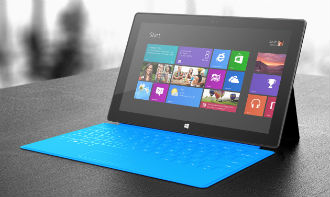 Microsoft announced its fiscal Q4 results last night and unsurprisingly the results missed expectations by a wide margin. The PC market remains slow, hence Redmond’s numbers can’t be good. The company reported revenue of $19.9 billion and earnings of $4.97 billion.
Microsoft announced its fiscal Q4 results last night and unsurprisingly the results missed expectations by a wide margin. The PC market remains slow, hence Redmond’s numbers can’t be good. The company reported revenue of $19.9 billion and earnings of $4.97 billion.
However, Microsoft’s attempt to tap the tablet market seems to have failed quite spectacularly. Redmond announced an embarrassing $900 million inventory write-down for Surface RT tablets. So, instead of helping the company out, the Surface burned a massive hole in its pocket.
Last week Microsoft slashed the Surface RT price by $150 in an apparent effort to clear inventory. The company is already working on the next generation of Surface RT products and it apparently includes two different form factors. The problem is that nobody else appears to be working on RT devices – in fact vendors seem to be running away from it like a particularly nasty flu bug.
The only companies who still seem to be supporting Windows RT are Qualcomm and Nvidia, which comes as no surprise since they are supposed to build the chips for next generation Surface devices. In a recent interview with Computerworld, Nvidia vice president of computing products Rene Haas said the chipmaker is still committed to Surface RT and Windows RT. He said he is excited by the “new price point” which might inspire new sales.
However, analysts are having none of it.
J. Gold Associates analyst Jack Gold said that Nvidia is simply marketing its product. “They don’t want to spook the market and say RT sucks and won’t sell,” he said. Analyst and ex-AMD and Compaq employee Pat Moorhead thinks Microsoft won’t ditch the platform anytime soon – even if it means that it will be the only OEM using it.
However, even Microsoft can’t afford such write-downs every couple of quarters and something has to change soon, or it will have another Zune on its hands.